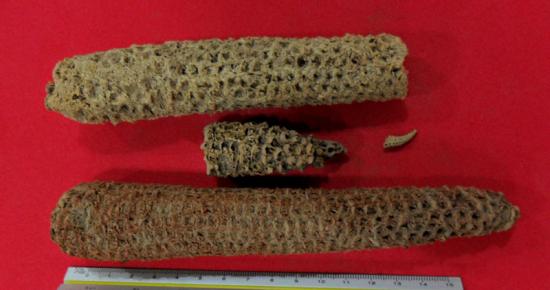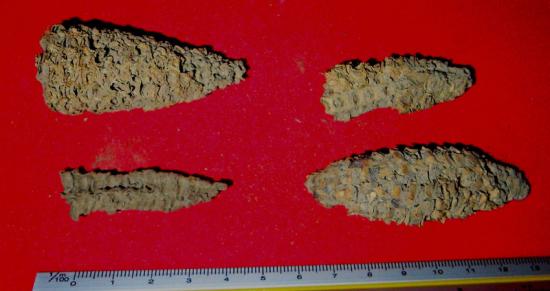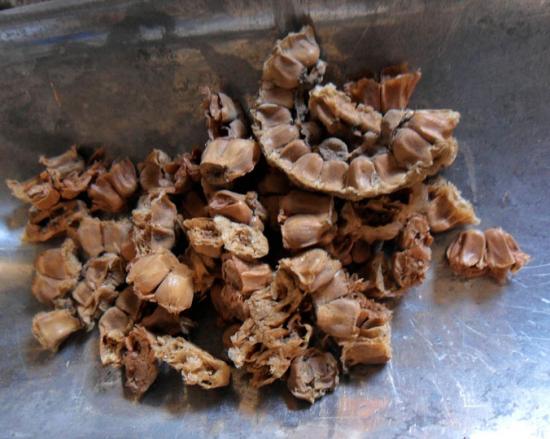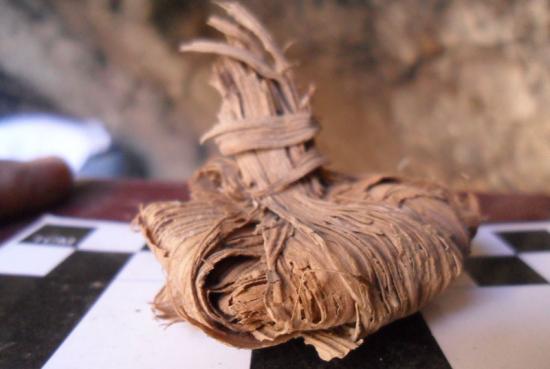Proto-agricultural activity by hunter gatherers found in rock shelter
Source - http://www.pasthorizonspr.com/index.php/archives/11/2013/proto-agricultural-activity-by-hunter-gatherers-found-in-rock-shelter
Photos : INAH
DESCUBREN INDICIOS DE AGRICULTURA ANTIGUA EN NUEVO LEÓN
Source - http://www.inah.gob.mx/boletines/14-hallazgos/6938-descubren-indicios-de-agricultura-antigua-en-nuevo-leon

Evidencia de agricultura incipiente del Periodo Arcaico localizada en la zona de El Morro, Nuevo León. Foto Araceli Estrada-INAH.
The first evidence of proto-agricultural activity in what is now the state of Nuevo Leon in northeastern Mexico, is estimated to date from 3500-3000 BC, based on new research by archaeologists from the National Institute of Anthropology and History (INAH).
This proto-agriculture was practised by hunter-gatherers who collected wild variants of what later became the staple domesticated crops of the region. The evidence for this activity comes from seeds, corn cobs and husks found at the small rock shelter site of El Morro.
“In Nuevo Leon archaeologists have never before identified any site with this type of evidence. After two seasons in El Morro , Municipality of Aramberri, we recovered approximately a thousand cobs and fragments, ” said Dr. Araceli Rivera Estrada, an INAH researcher for the region.

Los restos localizados datan de 3500 a 3000 antes de Cristo. Foto Araceli Estrada-INAH.
Exploring various rock shelters
Araceli Rivera, who in recent years has been devoted to exploring the various rock shelters in the area, highlighted the relevance of this finding saying, “evidence that hunter-gatherers of the region had already begun the initial process of farming from the Archaic period will lead us to reassess the categories to denote indigenous groups in the south of the state. ”

Envuelto. Hojas de maíz. Foto Araceli Estrada-INAH.
The researcher explained that the oldest records of the three major crops domesticated in Mexico (corn, squash and beans) come from only five caves which were excavated in the 1950s and 60s – Romero and Valenzuela near Ocampo (Tamaulipas); Coxcatlán and San Marcos, in the Tehuacan Valley (Puebla) and Guilá Naquitz (Oaxaca), with dates ranging from 7000 to 3000 years BC.
A small rock shelter

Se localizaron un millar de olotes y fragmentos de hojas de maíz. Foto Araceli Estrada-INAH.
The INAH specialist reported that the recent investigation was conducted in the rock shelter which also contained a large amount of rock art representing human and animal figures.
“Inside, systematic excavations have recovered a large quantity of seeds, leaves, stems, fruits and even flowers as well as various species of corn ” said Rivera.
The archaeologists also found fragments of basketry and cordage.
Middle Archaic period
Rivera said “charcoal samples obtained at different stratigraphic levels of the El Morro deposit are in the process of being dated at the Laboratory of the Division of Studies and Academic Support INAH “.
He added that by association with two lithics that were recovered in the earlier layers, the agricultural material could be dated to the Middle Archaic period (3000-1500 BC).